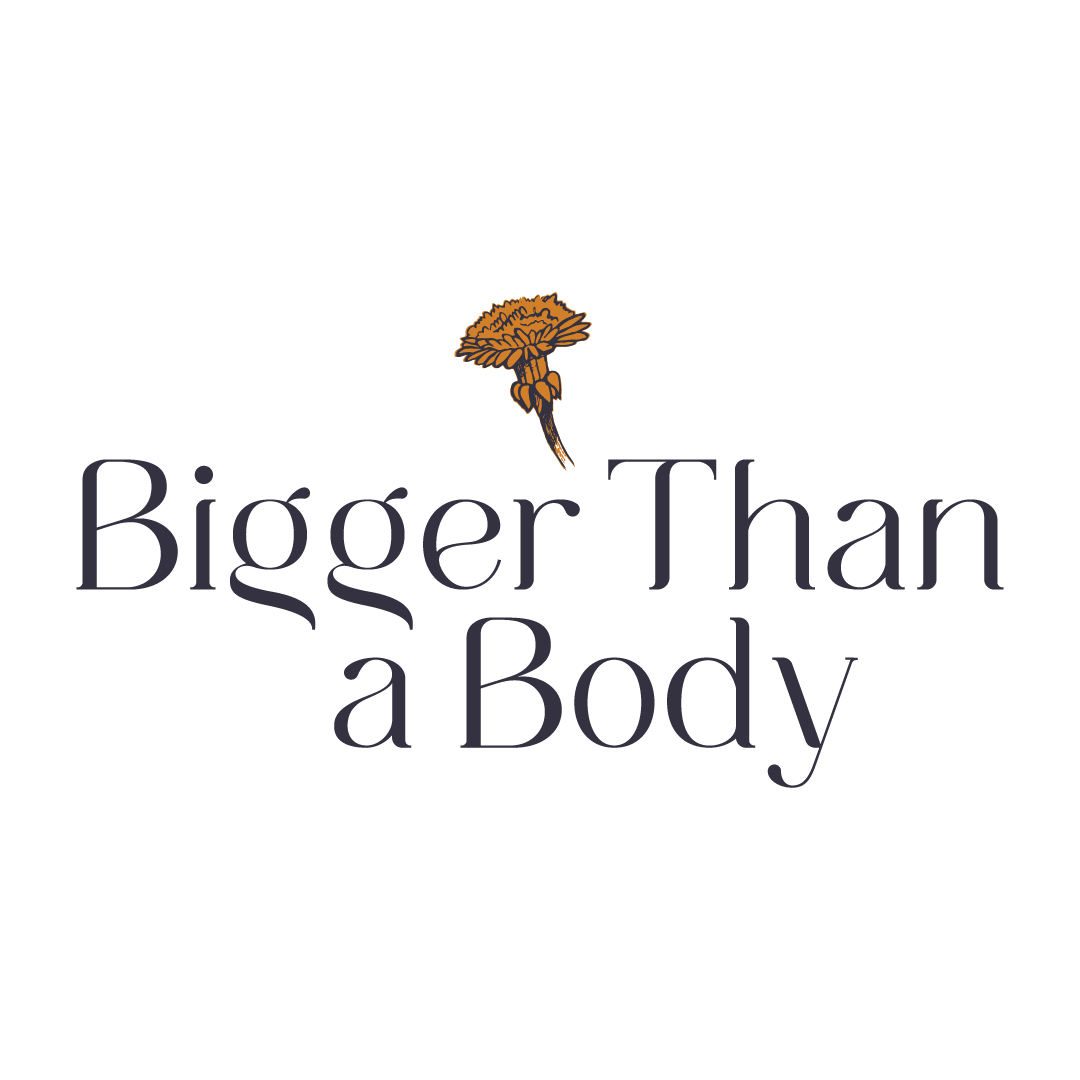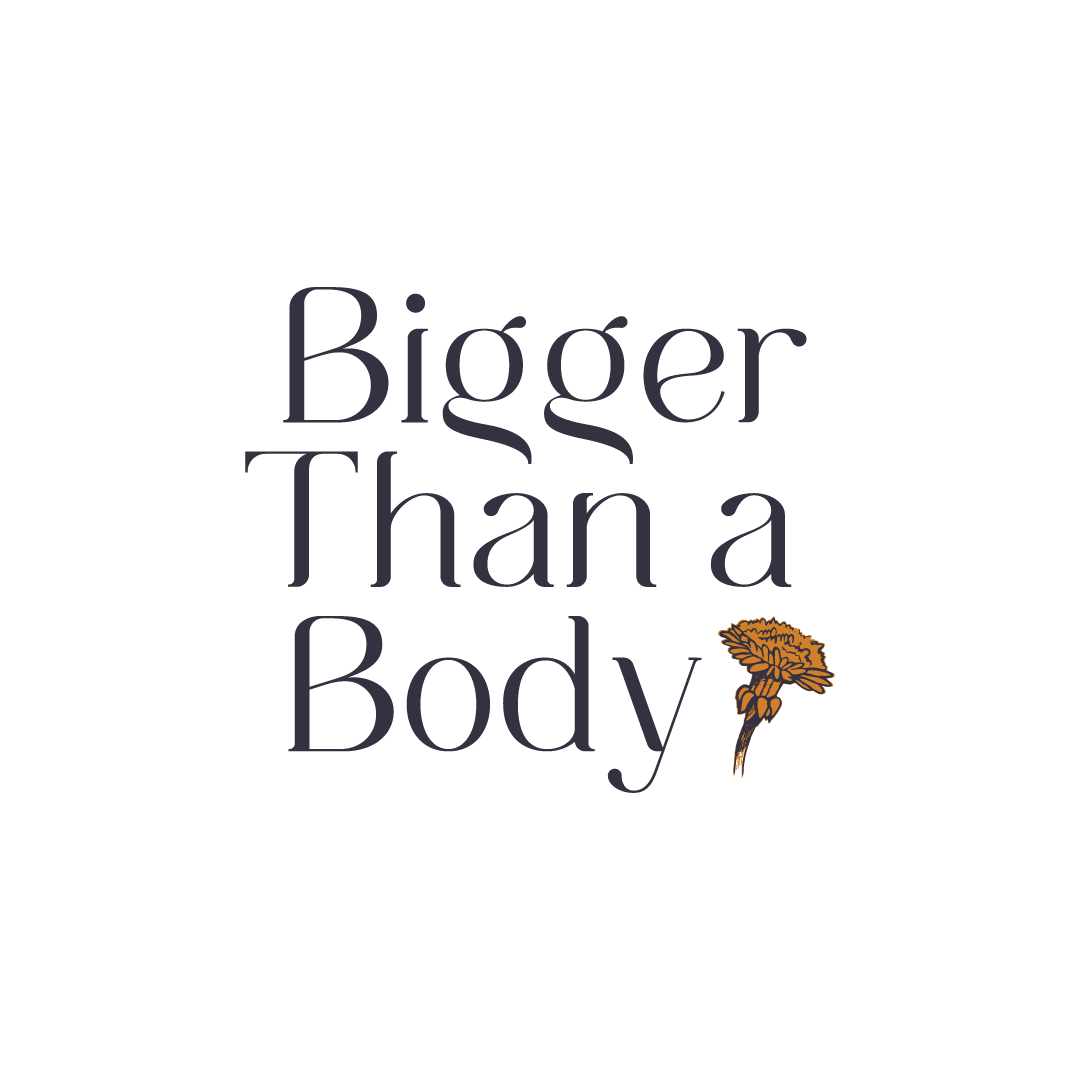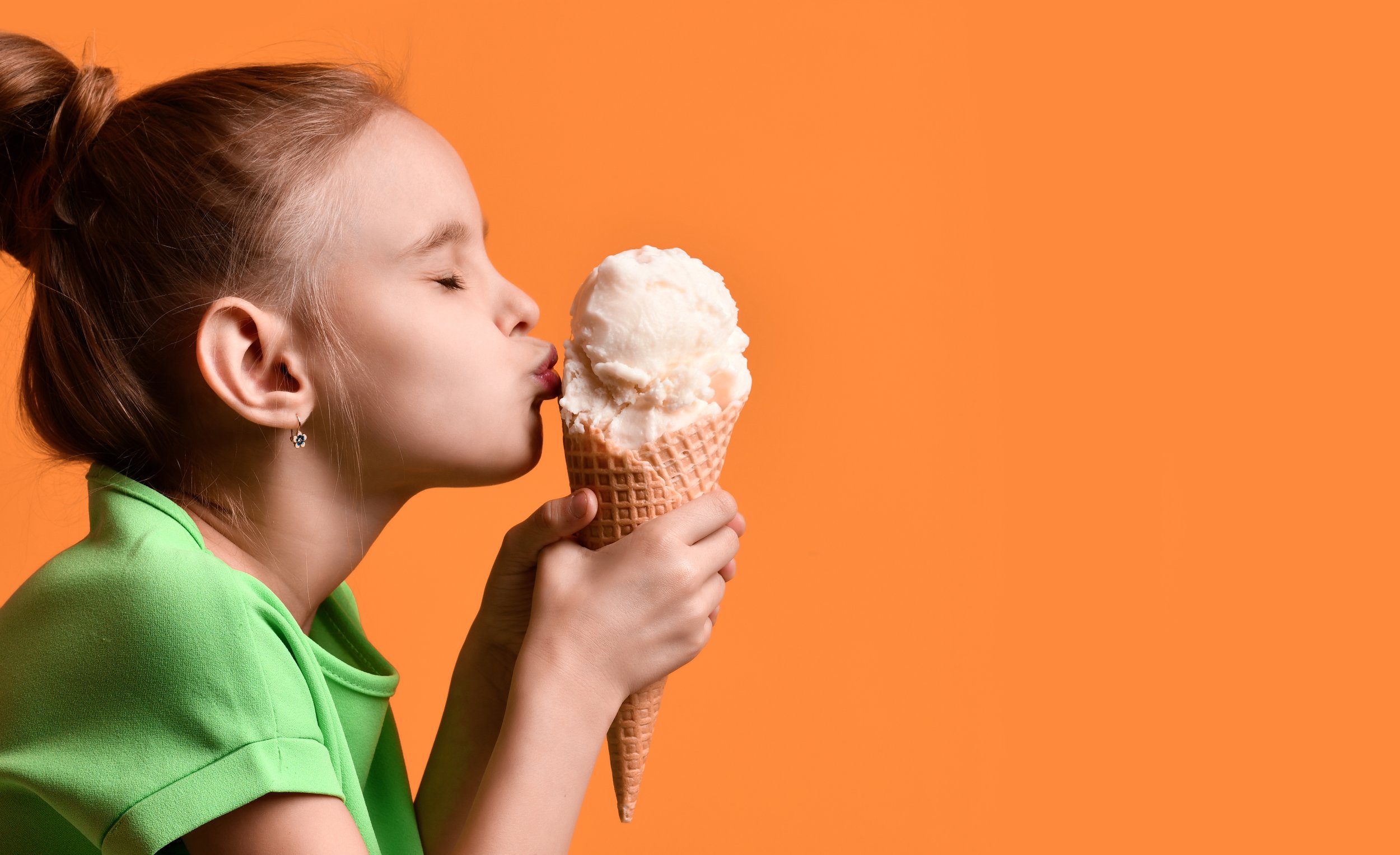How I Learned to Shamelessly Eat Ice Cream Again
My journey of dismantling toxic beliefs about food.
Photo by Dmitry Lobanov on Adobe Stock.
If there’s one food that comes to mind when thinking back on my childhood, ice cream is it.
The hot midwest summers. Winning (or losing) a soccer game. Needing a sweet treat on the drive home after a four-hour swimfest at the waterpark.
These were all occasions for ice cream.
Whether it was a Peanut Buster Parfait at Dairy Queen, an Oreo McFlurry at McDonald’s, or an old-fashioned chocolate malt at Annabelle’s (when my parent’s felt like supporting local), I was one happy-go-lucky kid who enjoyed the simple pleasure of a tasty treat.
But by age 11, that all changed. The body image distress I’d undergone for many years prior compounded when I started secretly reading my mom’s issues of Redbook and Cosmopolitan and picking up commentary in the television shows I watched.
It seemed at every turn of a page and every flip of a channel, diet culture was rearing its heavily hair-sprayed bleach-blonde head.
Before I knew it, my beloved ice cream was now a banned food, and a can of chalky Slim Fast took its place. I’d spend the next 15 years battling multiple eating disorders and disallowing myself to enjoy any ice cream that didn’t have a “low-fat” or “reduced sugar” label on it.
Fast forward to today, I’m a certified eating disorder recovery coach who sees the value and purpose of all foods in life — full-fat, full-sugar ice cream most certainly among them.
How did I get here? Well, I’ll walk you through that. Because if I was able to mend my relationship with ice cream, I have no doubt you’ll be able to do the same with any banned foods on your list.
I challenged the morality of diet culture
Everything I saw and read about food as an adolescent gave off the same message: That fat was the devil and sugar was its mistress. Believing this to be true, I considered ice cream as the lava pit they resided in.
But how, how could this be? In all my memories of eating ice cream, I was so happy — so carefree.
But I’d buried those memories, and it wasn’t until I entered eating disorder recovery that I resurfaced them. One of the many tools that helped me was challenging the morality of diet culture..
Questions I explored:
If dieting and restricting my food is supposed to make me feel good about myself, why am I always so stressed out and ashamed when it comes to food?
Is depriving myself of a food I love truly healthy?
Millions of people (even thin ones) eat ice cream every day, so why can’t I?
What I came to realize is that my relationship with food was perfectly fine until unwarranted sociocultural influences like the profiteering weight loss industry inserted themselves into my life.
From there forward, I vowed to unlearn all the nonsense about food and my body these crooked systems had pushed upon me.
I Set Myself Up Mentally
Once I realized how “not cool” diet culture was and all the ways it contributed to my suffering, I started planning how I could successfully reintroduce ice cream into my life.
I came up with my challenge
I decided I would get a pint of Ben & Jerry’s Fish Food ice cream and some waffle cones. My plan was to:
Eat it for at least four nights throughout the week as an evening snack.
Fill the waffle cone with a challenging yet approachable amount of ice cream for me.
Eat it in the company of my husband (someone I trusted).
Savor it and incorporate all five senses to keep myself attuned to the experience.
Move on with my night once I was done.
I visualized myself eating it
Now that I had my plan all laid out, it was time to imagine myself following through on it. Visualization is an immensely powerful tool. Essentially, it’s imagining — in detail — yourself accomplishing something in the future as if it were happening right now.
So, I closed my eyes and walked through the whole song and dance — from going and buying the ice cream to what I’d do the full hour after eating it. I did this practice multiple times to train my brain to see it as truth — as reality — so come time to actually do it, I’d be less inclined to back down or cut corners.
I made a list of Healthy Self/Wise Mind statements
In case my “inner critic” did try to make an appearance, I had a whole list of responses ready — things like:
I’m not letting crooked systems control what I put in my body.
I’m enjoying a serving of ice cream; not mindlessly devouring a whole pint of it. I have nothing to feel ashamed about.
Ice cream is delicious. I deserve to experience the joyfulness of food and eating.
This is one of the many food choices I’ve made today. There’s more to my diet than just ice cream.
I was ready to go.
I Ate the Blessed Ice Cream (at Home)
It was time to put mouth to cone. Yes, there was still a semblance of anxiety. But I was in a safe space. My brain had done all the mental rehearsing. I had comments in my pocket to back me up.
I enjoyed every bite — especially that last one where it’s just a bunch of soupy milk at the bottom of the cone. Pure bliss.
I will say, by about the fourth or fifth consecutive night of eating ice cream, it started to feel a bit like a chore — but that was a good thing. In such a short time, my brain realized I could have ice cream anytime, and both the immense fear and excitement I’d attached to it began to subside.
Me enjoying a book after finishing off some Ben & Jerry’s ice cream.
In turn, I continued to eat it consistently to further strengthen the new brain pathways I was building and to fully erase the old nefarious ones.
I Ate the Blessed Ice Cream (in Public)
All the practice of eating ice cream at home (in a controlled environment) set me up for my next challenge: going out for ice cream.
My co-workers often mentioned wanting to go to a local ice cream shop down the street. This place didn’t have any online nutrition facts to look up, and aside from a sorbet option or two, you weren’t going to find any low-calories options here.
So, one afternoon I suggested we all go check it out. On the walk there, I could smell the buttery waffle cones and knew I had to get one.
There I sat, with my coworkers, savoring the tart cherries and pie crust of my first scoop, the toffee sauce interlaced throughout my second scoop, and the crunch of the thick and freshly baked cone they were nestled in. In addition to shamelessly enjoying my afternoon treat, the small talk with my teammates was quite nice, too.
Also being in my neighborhood, I made a point to visit that ice cream shop on a regular basis, trying at least one new flavor each time to mix things up.
Me holding a waffle cone from my favorite local ice cream shop.
I Didn’t Bully Myself After-the-Fact
Making a plan and taking action through exposure therapy are two critical pieces to the overcoming-your-fears puzzle, but don’t underestimate the importance of post-challenge care, either.
If I sensed any guilt creeping in after eating the ice cream, I trained myself to use opposite action — a concept I’d learned about in the dialectical behavioral therapy I underwent.
Rather than limiting my food intake or exercising to compensate for my ice cream, I chose to celebrate the fact I’d eaten it.
I smiled in the mirror.
I told myself “This is what healing looks like.”
I took photos of myself happily eating the ice cream and either shared those with others or kept them to myself to look back at.
Sometimes, I imagined that bleach-blond diet culture head staring me down, and I gave her the finger.
Oh, those Wise Mind statements I mentioned earlier came in pretty handy, too.
The Cherry on Top
All of the steps I took — the mental prep, the doing, the aftercare — involved a lot of work and enveloping myself in the moment.
While it was so important to stay focused on the process of mending my relationship with ice cream, it also helped to sporadically remind myself why I was doing this:
To gain back control.
To see food as nourishment and also joy, sentiment, and connection.
To be able to eat a Peanut Buster parfait on a hot summer day for no other reason than, “that sounds nice.”
Mending my relationship with ice cream was an incredible step in my food freedom journey, but it wasn’t the last. I continued to challenge all of the beliefs so many superficial sources had taught me and eventually formed my own.
The cherry on top? Now I get to live a life aligned with my values. And my values say that life’s too damn precious to not include ice cream.




